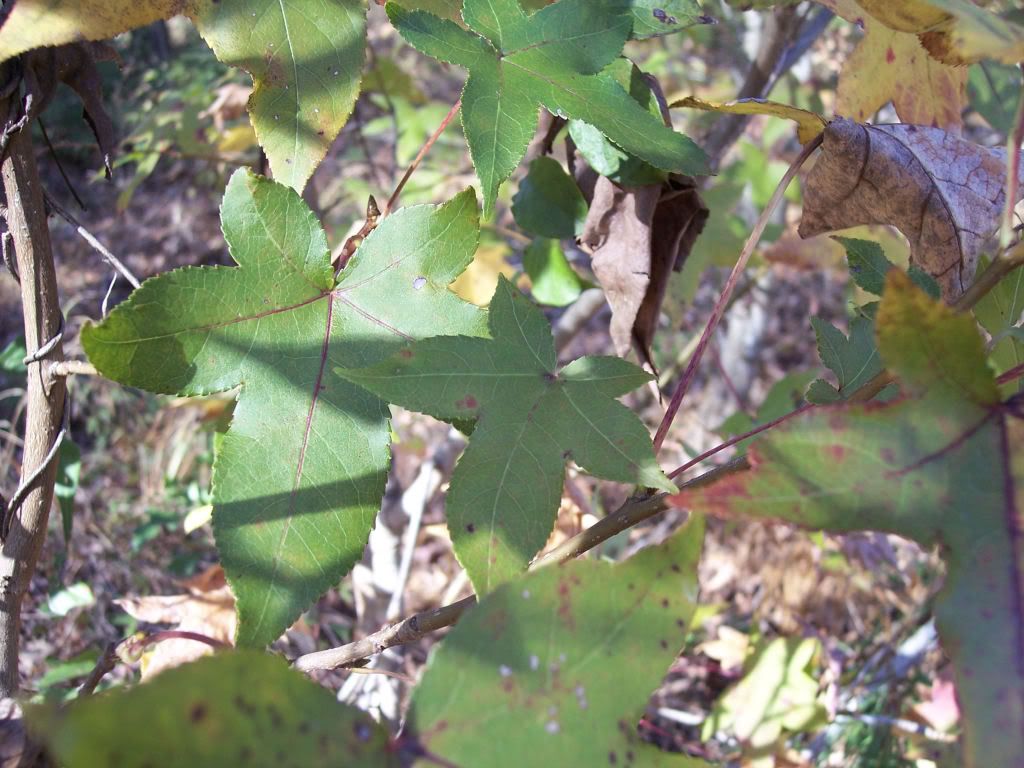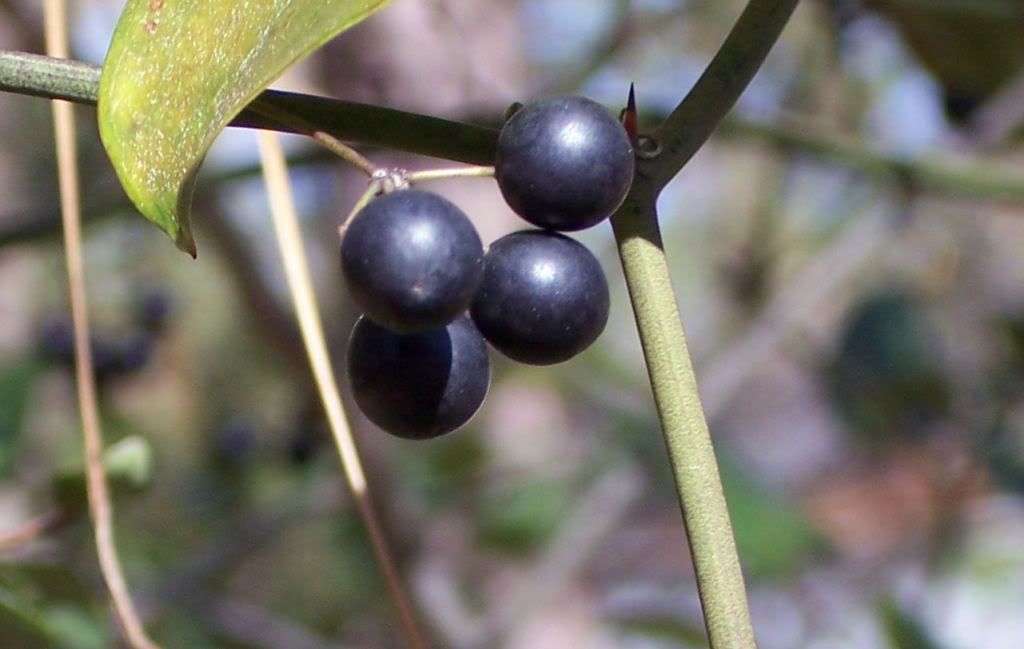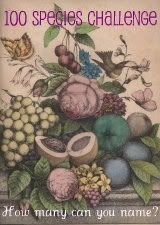I am finally doing my first 100 Species Challange post. With dead camera batteries and too much other stuff going on, this has taken longer than I thought.
- Sweetgum
- Greenbriar
 Name: Sweetgum
Name: SweetgumAlso known as redgum, american sweetgum, starleaved gum, gumtree and alligator wood. A deciduous tree with leaves that are deeply palmate, or star shaped. When crushed, the leaves have a very strong fragrance, kind of peppery, minty, mentholy. The leaves somewhat resemble maple but are alternately arranged rather than opposite.(see below for an explanation of alternate and opposite)
Sweetgum has a fruit that you would recognize if you ever stepped on one, looking more like a weapon than a fruit. It’s a spiny ball that will clutter up the yard.
Except for the messy balls, it is a beautiful landscape tree and is one of the top producing hardwoods. It is used to make flooring, veneers, furniture, paper pulp and basket making.

The sweetgum sap has been used by oldtimers to make a chewing gum. Supposedly, the leaves when chewed and applied as a paste will releive fire ant bites. I have tried this on Junior and he said it helped, but it took awhile before I had the taste out of my mouth (think really, really strong mint gum). Since I avoid fire ant beds, I haven't tried this on myself. Yep, I am a wimp.
---------------------------------------------------------- Name: Greenbriar
Name: GreenbriarAlso known as as horsebrier, catbriar, stretchberry, tramps troubles, blasphemy vine and hellfetter.
A common woody vine that grows in the same area as sweetgum. The leaves are very glossy, almost waxy looking and are broadly rounded. It is the only vine in the United States that has both thorns and tendrils.
The vine can form a thick thicket that is home and food to a variety of wildlife. The deer graze upon the leaves, birds eat the berries and cottontails make their home in its thick cover.

The berries can be mixed with the sap of the sweetgum tree, to make the gum stretchier. I have broken open these berries and there is a thin, clear stretchy membrane that really is elastic-like.
The young shoots, tendrils and leaves can be cooked as asparagus, ro eaten raw. The roots when crushed, washed and strained produce a red powder that can be used as a gelatin. This powder can be added to soups as a thickening agent or mixed with tannic acid as a soothing salve for bites, minor burns, or abrasions.
----------------------------------------------------------
While looking this information up, I found this book which looks like a wonderful resource. I love the look of
this book, I was able to veiw some of it and found it a huge wealth of information. That is where I got alot of the info on the Greenbriar.
Ok I must confess, I just borrowed the graphic from Amazon. So if you want to see inside the book, you have to go to Amazon. You can just
click here.
----------------------------------------------------------I promised to explain alternate and opposite. Here goes. Then you look at a branch that has leaves they will be either alternate or opposite. Opposite leaves would be like your 2 arms. They are on opposite sides of the body. Alternate means they are not opposite. They can be very close to opposite, but if they aren't even, it is alternate. Here is a little diagram I threw together to give a visual.
























